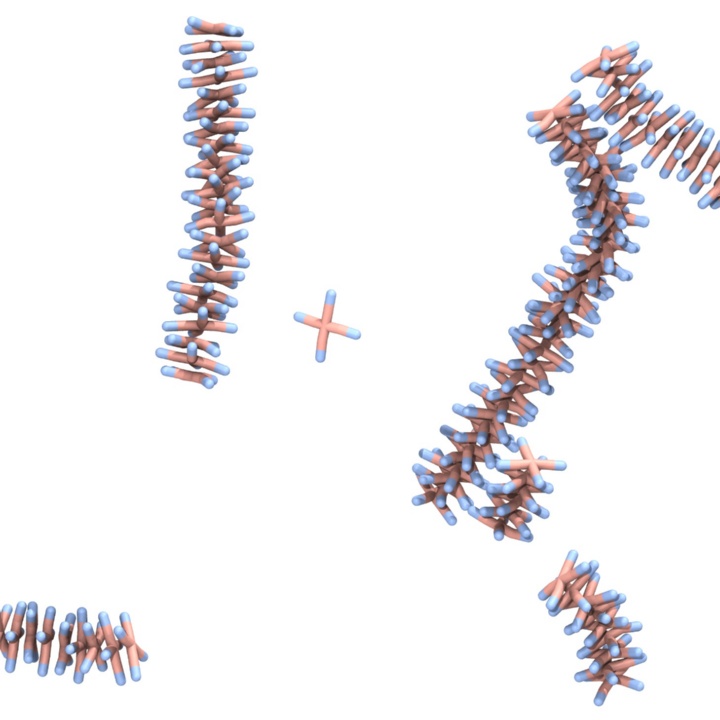From cotton to beer foam, wall paint to jelly—soft matter is everywhere. New developments in medical technology, energy storage and information technology also use soft materials.
Understanding, controlling and actively managing processes of structure formation
Despite their differences, all soft materials share a common characteristic: an aggregate state between solid and liquid, coupled with a complex internal structure. How exactly do these structures form? And how can the development process be controlled in order to obtain materials with certain desired properties? Doctoral researchers from several universities are investigating these questions as part of the Research Training Group “RTG 2516 - Control of structure formation in soft matter at and through interfaces”. The RTG is headed by Johannes Gutenberg University Mainz (JGU) and was established in 2020. The German Research Foundation (DFG) recently approved an extension for a further four and a half years. The University of Stuttgart is now also a new partner.
pH-responsive polymers: potential as a sustainable plastic
"The University of Stuttgart is currently contributing to the RTG with a doctoral project focused on modeling supramolecular pH-responsive polymers,” reports Prof. Thomas Speck, Head of the Institute of Theoretical Physics IV. A distinctive feature of this relatively new class of materials is that their chemical bonds are much weaker than those in conventional plastics. “This means that the material is much easier to break down, which is an important step towards more sustainable plastics.” In addition, the so-called polymer chains can be electrically charged so that they can interact with water. Among other things, this holds potential for medical applications: pH-responsive polymers are suitable as a basis for hydrogels, which are used in wound treatment or on contact lenses, for example.

Trademark: Interdisciplinary project groups
The RTG 2516 has a special trademark: In each project, doctoral students from chemistry and physics work together in close cooperation, with theory and experiment closely interlinked. “Our institute conducts research on a wide range of issues related to statistical physics. Furthermore, the University of Stuttgart is a leader in computer-aided simulations, bolstered by the SimTech Cluster of Excellence and the Stuttgart Center for Simulation Science. We use our expertise in the RTG project to calculate materials with precisely defined properties. The numerical simulation forms an important basis for the laboratory work of the Mainz chemistry team. These areas complement each other perfectly," says Speck, who has been actively involved with the Research Training Group for some time. Previously, he worked at Johannes Gutenberg University Mainz, where he served as the spokesperson for RTG 2516, before joining the University of Stuttgart in 2022.
RTG 2516: Control of structure formation in soft matter at and through interfaces
The RTG 2516 was established in 2020 to provide doctoral researchers with an interdisciplinary education that prepares them for a successful career in science or business. In November 2024, the German Research Foundation (DFG) approved an extension for a further four and a half years and is providing around 5.2 million euros, including a program allowance, for the second phase from January 2025. In addition to the Johannes Gutenberg University Mainz (JGU) as the host institution, the Max Planck Institute for Polymer Research Mainz (MPI-P), TU Darmstadt, and—newly added in the second phase—the University of Stuttgart are also involved. The University of Stuttgart is currently involved with one doctoral project; doctoral student Mira Mors is based at the Institute of Theoretical Physics IV and is a member of the SimTech Graduate Academy. A further doctoral project is also being planned.
Further information
Contact

Lena Jauernig
Editor Research / Early Career Researchers


